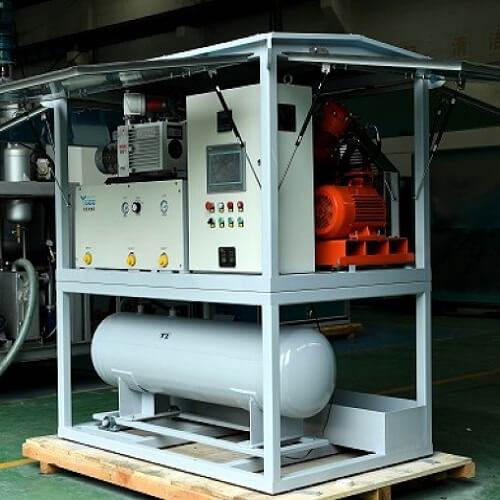SF6 Gas Recovery Equipment in High-Voltage Switchgear Maintenance

For engineers and technicians responsible for the high-voltage grid, maintenance is a non-negotiable practice. It’s the disciplined process that ensures reliability, prevents catastrophic failures, and guarantees the safety of both personnel and the public. When that maintenance involves SF6-insulated switchgear, the procedure takes on an added layer of complexity and critical importance. At the heart of this safe and effective process lies an indispensable piece of equipment: the SF6 gas recovery unit.
More than just an environmental tool, SF6 recovery equipment is a fundamental pillar of modern high-voltage asset management. It enables the meticulous work required to keep the grid running smoothly while managing the unique challenges posed by the SF6 gas itself.
The Maintenance Imperative
High-voltage switchgear is the nerve center of the electrical grid, directing power flow and protecting equipment from faults like short circuits. The SF6 gas inside is what allows this equipment to be so compact and efficient, as its superb insulating and arc-quenching properties extinguish dangerous electrical arcs in milliseconds.
Over time, however, several issues can arise:
Moisture Ingress: Even tiny leaks can allow atmospheric moisture to enter the system. Excess moisture can compromise the insulating strength of the SF6 and lead to internal corrosion.
Decomposition By-products: When SF6 is exposed to an electrical arc, it decomposes into toxic and corrosive compounds, such as sulfur tetrafluoride and metal fluorides.
General Wear and Tear: Seals can degrade, and internal components can wear, necessitating inspection and replacement.
To address these issues, the switchgear must be opened. But you can't just vent the SF6 gas and get to work. This is where the recovery process begins.
The Step-by-Step Role of Recovery Equipment in Maintenance
Safe Decommissioning and Gas Recovery: Before any bolts are loosened, the recovery unit is connected to the switchgear's gas ports. The unit's powerful compressor creates a pressure differential, actively pulling the SF6 gas out of the chamber and liquefying it for storage. This not only captures the gas but, most importantly, renders the equipment safe and depressurized for technicians to enter.
Evacuation and Purging: Once the bulk gas is recovered, the unit uses its integrated vacuum pump to evacuate the switchgear chamber completely. This removes any residual gas and air, creating a clean slate. Often, the chamber is then purged with an inert gas like nitrogen to ensure no toxic decomposition by-products remain.
Enabling the "Hands-On" Work: With the chamber safe and clean, technicians can perform the necessary maintenance—replacing contacts, inspecting arcs chutes, changing desiccant, and replacing seals. This work is impossible without first using the recovery unit to make the environment safe.
Re-filling with Pure SF6: After maintenance is complete, the switchgear must be re-pressurized. Here, the recovery unit plays another key role. It can re-introduce the same, now-purified SF6 gas that was initially recovered. The unit’s filtration system will have removed moisture and decomposition products, ensuring the gas going back in meets the manufacturer's strict purity specifications. If needed, the unit can also be used to add new, make-up gas to achieve the correct pressure and density.
Beyond Recovery: The Purification Advantage
This purification capability is a major cost and operational benefit. Instead of dealing with the expense and logistical hassle of sending contaminated gas off-site for recycling and purchasing new gas, the recovery unit can often purify the gas on-site, in real-time. This turns what could be a multi-week process into a matter of hours, significantly reducing equipment downtime and keeping critical assets in service.
Conclusion
SF6 gas recovery equipment is far more than an environmental compliance tool. In the context of high-voltage switchgear maintenance, it is a critical enabler of safety, efficiency, and reliability. It creates the safe working conditions that allow technicians to perform their vital work and ensures that the lifeblood of the switchgear—the SF6 gas—is managed as a valuable, reusable asset. For any utility or service company serious about safety, uptime, and operational excellence, a robust SF6 gas management strategy, centered on high-quality recovery equipment, is not just best practice—it's essential.
- Art
- Causes
- Crafts
- Dance
- Drinks
- Film
- Fitness
- Food
- Giochi
- Gardening
- Health
- Home
- Literature
- Musica
- Networking
- Altre informazioni
- Party
- Religion
- Shopping
- Sports
- Theater
- Wellness


